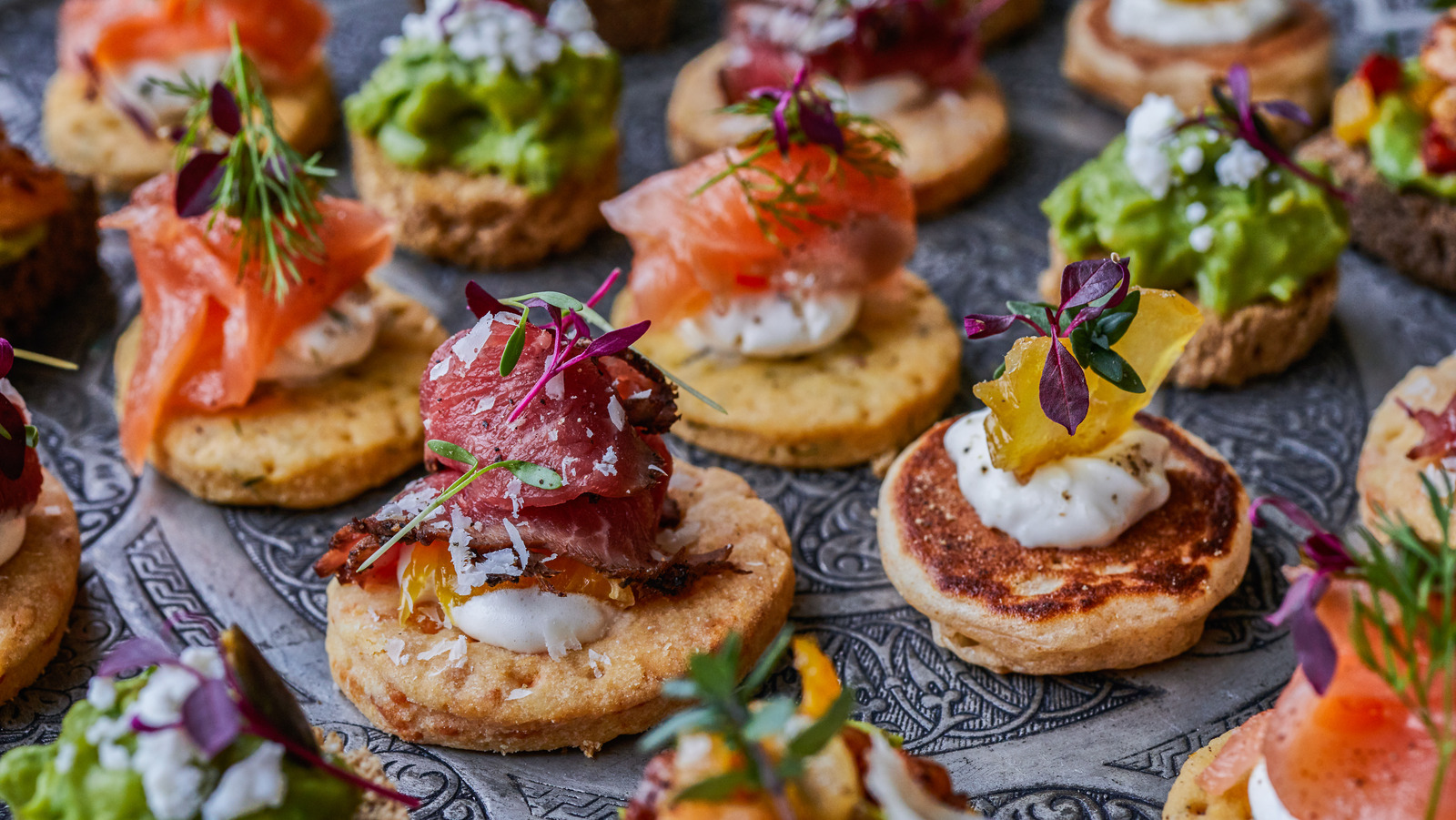
How Appetizer’s Became The Starter Dishes We Know Today – Tasting Table
Appetizers: Those wonderful little palate preppers that get your taste buds whirring and excited for the meal ahead. Typically part of a multi-course meal, appetizers have been a part of restaurant and home dining for as long as anyone currently living can remember. But how did they get to be the starter dishes we all know today?
It may be easy to brush off the notion that appetizers evolved over the course of thousands of years, but that is exactly what happened. Beginning in ancient times, appetizers have gone through a series of transformations to become the starter dishes we all love. And though their place within the meal may have changed, the basic premise has not. Appetizers have always been small, flavorful bites eaten before the main meal.
Today, there are seven types of appetizers: cocktails, canapés, crudités and relishes, hors d’oeuvres (we’ll get to that), soup or consommé, chips and dip, and salads. While virtually every culture on Earth has some form of appetizer, the ones listed are specific to Western dining traditions. And there is no more fitting place for that tradition to have begun than the cradle of Western civilization itself, Ancient Greece.
Rooted in ancient origins
 Elena Dijour/Shutterstock
Elena Dijour/Shutterstock
The Ancient Greeks were no strangers to feasting. In reverence of Dionysus – the Ancient Greek god of wine, feasting, festivals, and theatre – tables filled with wine, roasted meats (for special occasions), vegetables, and fish were common throughout the Greek world. Certain staple fruits, like grapes, as well as breads and cheeses, were also common. However, it was the Athenians, in particular, who truly began the tradition of appetizers as we know them today.
The wealthy of Athens would begin their long, rambling feasts with small portions of specific foods. Snails, sea urchins, and pickled cabbage were some typical fare. However, hosts were often criticized for their portion sizes and the fact that they were served far too early in the evening, leaving guests just a tad hangry by the time the main course was served. This tradition carried into Ancient Rome, where seasoned vegetables, cheese, and olives were popular. One can see the beginnings of the Mediterranean diet and food culture with these small bites.
Today, in Italy, Spain, and Greece, it is not altogether uncommon for diners to enjoy full meals solely comprised of individual appetizers. However, though different cultural norms have evolved around the eating of appetizers, in terms of appetizers as a proper pre-dinner course, we have the French to thank.
Journey to a modern tradition
 Image Source/Getty Images
Image Source/Getty Images
Though the nachos and potato skins at your local tavern might not seem remotely French, their dining tradition is responsible for those dishes being available in the first place. In French dining during the 17th and 18th centuries, hors d’oeuvres were served as small bits throughout the entirety of the meal. However, as formal dining evolved even further during the 19th century, hors d’oeuvres were no longer served within the scope of the entire meal, but rather beforehand as their own separate entity that served to complement the main dish.
Translated to “outside of the main meal”, hors d’oeuvres became the beginnings of the formal appetizers served at the start of the traditional three-course meals. Using hors d’oeuvres as a model, appetizers began to develop into the small, affordable plates we know them as today. So, why exactly are they considered their own category?
The answers are not exactly clear. It could be because the French tradition is so connected to fine dining that hors d’oeuvres are simply considered to be fancier appetizers. Regardless of association, however, French dining traditions caught on in other European nations, as well as the United States. So, as the French system grew, so did the enjoyment of appetizers. So, the next time you’re enjoying a plate of calamari, cup of soup, or salad before your main course, take a moment and think of the history on your plate. It may not seem like much, but you’re partaking in a long, beloved tradition.

































































